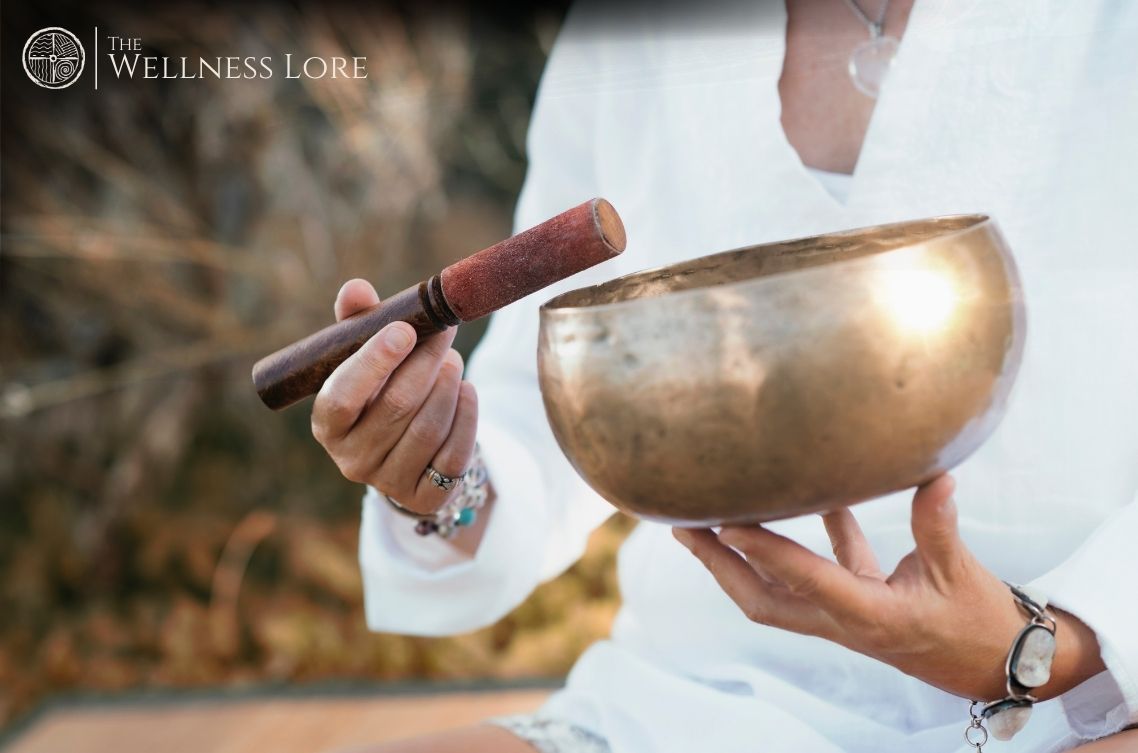Wellness benefits of Tibetan singing bowls

When a Tibetan singing bowl is used it vibrates and produces a rich, deep tone. Tibetan singing bowls, also known as Himalayan bowls or singing bowls, are said to promote relaxation and have powerful healing properties. Tibetan singing bowl sound therapy is an ancient form of rejuvenation. The first bowls were made from an alloy of various metals and were used in the Far East 6000 years ago. Tibetan singing bowls are a mysterious acoustic phenomenon discovered by spiritual tourists in the Himalayas and later appeared in Europe and the United States after the Chinese invasion of Tibet.
The sound of Tibetan singing bowls and gongs harmonizes, allowing for deep relaxation of both sides of the brain. It promotes stress relief on all levels as well as the removal of toxins from the body. Emotions are calmer, the mind is more alert, and sound vibrations affect the body after singing bowls have been played on it.
History of Tibetan singing bowls
The exact origins of the Tibetan singing bowl are unknown, but there is some evidence that it may have originated in China around the 16th century BC. Metals used to make traditional bowls included mercury, lead, silver, iron, gold, and copper. People began importing the bowls to North America and Europe in the 1970s. They gained popularity as a complementary and alternative treatment for several ailments in the 1990s.
What makes these bowls so unique?
Tibetan bowls are created from alloys containing five to seven precious metals associated with the planets of our solar system: lead (Saturn), tin (Jupiter), iron (Mars), copper (Venus), mercury (Mercury), silver (the Moon), and gold (the Sun). The tone, vibration, and quality of sound produced by the bowl depending on the size of the bowl and the metal ratio. Bowls vary in shape and appearance because they are used for sound therapy in various ways and with various accessories. The most commonly used accessories are strikers, which are used to strike bowls or wooden mallets that are rotated around the bowl’s rim.
What effect does sound have on our bodies?
Sound, without a doubt, is one of the most potent media, as it can transport the human spirit to various states of consciousness.
Tibetan singing bowls help with deep relaxation and muscle regeneration, pain relief in the joints, muscles, shoulders, sciatica, the digestive system, headaches, migraines, or spine injuries, to improve circulation, release tensions or blockages, open the energy flow, and eliminate toxins from the body. Our concentration improves, while emotional tensions and blockages are relieved when we relax to the sound of Tibetan bowls.
The vibrations of that sound can alleviate mental or emotional pain (low self-esteem, worries, fear, anger, anxiety, depression, insomnia). Tibetan singing bowls and their distinct tones help lower blood pressure, alleviate asthma symptoms, rejuvenate the adrenal gland, open and stabilize meridians, and improve synaptic responses in our brains. They also aid in the treatment of hyperactive children and stimulate the immune system.
How to use singing bowls
You will lie on the floor during the singing bowl treatment while the bowls will be arranged in various configurations. They could, for example, be placed around your body, on your body, or in various locations throughout the room. Once in position, the practitioner will strike the bowls in a specific order to produce sounds and vibrations. Your practitioner may also include guided meditation in some cases.
To use a singing bowl, firmly press the accompanying mallet against the bowl’s outside edge or rim in a circular motion. You can slow down the motion when you hear a bright, clear tone. Instead of just rotating your wrist, use your entire arm to make the motion. You can also use the same circular motion against the bowl’s outside belly. You can also gently strike the bowl before beginning the circular motion.
Benefits of Tibetan singing bowls
Despite their long history of use, very few scientific studies have looked into the potential benefits of Tibetan singing bowls. However, some people claim that using the bowls makes them feel more relaxed. Singing bowl therapy can be used for a variety of purposes, including:
Stress reduction:
Some research supports using Tibetan singing bowls to promote relaxation and reduce anxiety.
Improving sleep:
It may help with sleep because singing bowl therapy can aid with treating anxiety and tension.
Lowering blood pressure:
In 2014, a preliminary study published in the American Journal of Health Promotion looked at the benefits of beginning a guided relaxation session with 12 minutes of singing bowl sounds. It discovered a reduction in systolic blood pressure and heart rate, as compared to before the session.
Reducing depression:
One study linked singing bowl therapy to mood improvements, implying that this approach could be a low-cost way to help reduce depression symptoms.
Stimulating the immune system:
Some people believe that Tibetan singing bowls can help stimulate the immune system and cause beneficial changes in brain waves.
Pain relief:
In one study of chronic spinal pain, people who received singing bowl therapy experienced significantly less pain intensity and less stress. However, because placebo treatment had the same effects, the study’s authors concluded that the effectiveness of singing bowl therapy for pain relief could not be confirmed.
Balancing and harmonizing the body:
Many supporters claim that the vibrations of a singing bowl can produce beneficial changes in the body by “harmonizing” the cells and “balancing the body’s energy system.”
Enhancing other healing practices:
Some people combine the bowls with other healing practices like meditation and deep breathing.
Side Effects and Risks
While using Tibetan singing bowls is considered safe, there has been little research into the potential risks and side effects. Those who should avoid singing bowl therapy include those who:
Are prone to headaches:
Some people complain of headaches after listening to singing bowls.
Are pregnant:
If you are currently pregnant, you should avoid this type of therapy because the effects on pregnancy are unknown.
Have epilepsy:
Noise and vibrations can cause seizures in some people.
Singing bowls have a long history dating back to East Asian cultures and have been utilized for much more than just wellness in traditional settings. Tibetan singing bowls can promote relaxation, alleviate stress, and have other healing properties. These bowls originated in China thousands of years ago and have grown in popularity in other countries over the last few decades.
More Recent Stories



